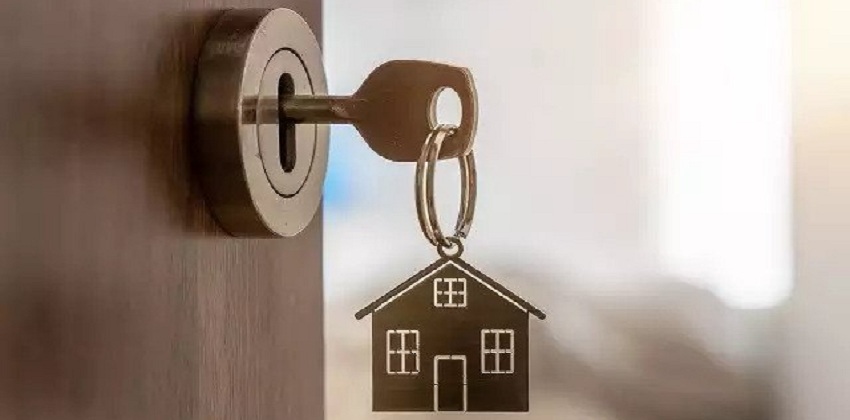Importance of owning a house in the aftermath of Covid-19

With home loan rates at the lowest in almost two decades, this is the best time to buy.
Opportunities don’t come knocking on your door very often. However, when they do, you’ve got to be ready to optimise it to the fullest. The aftermath of the Covid-19 pandemic situation has established the fact that owning an apartment is way better than dealing with the uncertainties of living in rented accommodation. People are also realising the importance of having real estate, as an asset class in their investment basket, as a more reliable option offering steady returns compared to the highly volatile stock market that comes with heightened risks.
A recent report by a global consulting firm stated that the level of March 2020 residential property sales in China stands at almost 95% in comparison to the December 2019 levels. If this bounce back after the lockdown that ended last month in China is an indication of a trend, the Indian real estate market is also likely to witness a similar scenario after attaining normalcy.
Driving this trend will be the Reserve Bank of India’s (RBI) monetary policy decision earlier in March 2020 to slash repo rates by 0.75 basis points (bps). This move by the Indian central bank has made home loans significantly attractive presenting potential home buyers with an opportunity that cannot be missed. The steep cut has brought interest rates on home loans by public and private sector banks to their lowest, between 7.20% and 8.05%, in over a decade.
It’s definitely good news for those chasing a life goal to own a house, more so for those waiting for the right time to take the plunge. If you’re among them, then wait no further.
That’s because home loans at prevalent interest rates allow for considerable savings while creating an asset for end-use or investment purpose. Furthermore, the borrower gets to use the savings resulting from a reduced equated monthly instalment (EMI) to avail a top-up loan, also available at lower interest rates.
The additional funds can be used for undertaking interiors related work for the apartment being purchased. Alternatively, a lower interest rate also gives borrowers an option to raise a higher amount of loan. This helps widen the choice in terms of a bigger home with better amenities and lifestyle facilities in a prominent neighbourhood.
Here’s how it works out numerically.
A back-of-the-envelope comparison of a 25-year home loan of Rs 1.5 crore at interest rates of 8.5% and 7.75% results in an equated monthly instalment of Rs 1,20,784 and Rs 1,13,299 respectively. The reduced rate of interest gives the borrower an upfront monthly savings of Rs 7,492. If need be, this money can get the borrower a top-up loan of up to Rs 9.9 lakh for enhancing the apartment’s look and feel.
By claiming tax benefits on principal and interest payments under various sections of the Income Tax Act, the borrower is able to further save Rs 9,722 every month or Rs 1,16,666 annually. The effective EMI for the borrower thus comes down to Rs 1,03,577 (including tax benefits) with an effective rate of interest at 6.74%. That’s almost 1% lower rate of interest on the home loan being availed.
In fact, the effective rate of interest on home loans gets more attractive at 5% for apartments in the affordable housing segment. The overall proposition sweetens further when combined with tax benefits in the case of a joint home loan.
Interestingly, if one compares the present scenario with home loans being offered in the year 2002–03, the interest rates pretty much hovered at similar levels. In fact, lower home loan interest rates coupled with affordable prices acted as catalysts back then leading to a consistent growth in property prices across markets in the ensuing years.
Another benefit of the current home loan interest rate scenario is that a borrower can look at the possibility of going for a fixed rate over a floating one. The latter tends to get volatile and can go north based on monetary policy decisions by the Indian central bank.
Banks and other financial institutions typically charge a premium for home loans at fixed rates. So, this option is best availed when overall interest rates are at their lowest. The home loan borrower is able to lock the fixed-rate at a lower level and get rid of the stress arising out of the interest reset practices followed by various lending institutions.
Those looking to acquire a property for investment purposes and earning rental income have their own set of benefits. Rental yields are currently pegged at 2.5%. And with effective interest rates at 6.75%, the net effect, if a home is purchased for letting out, comes to 4.25%. This beats long term inflation figures of India hands down, thus presenting another win-win situation.
Buying an apartment is the most expensive financial commitment that an individual makes in his/her lifetime. Keeping the overall acquisition cost in mind, the mid-segment and affordable housing categories have emerged as the most sought after for potential buyers.
An opportunity, in the form of lowest home loan interest rates, is now available. Go ahead, make its best use and fulfil your life dream.


